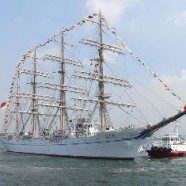The Disaster Domain Expands
The extravagant iodine-131 content around the area of the Fukushima Daiichi Nuclear Power Plant is a result of leaching of emergency cooling waters used by firefighters and emergency workers. At Fukushima and at French nuclear facilities, there is no collection device for these cooling waters whereas all warehouses storing chemical products are legally bound to be equipped with a collection basin of polluted water used to extinguish fires. The iodine-131 content is also a result of the consequent radioactive dust deposits of the explosions in the heights of the nuclear islets, namely the buildings, the reactors, and the pools. The iodine-131 is one of the indicators of pollution. Other measures will later show similar deviations from standards for cesium-137 and plutonium.
The Disaster Domain Expands
The extravagant iodine-131 content around the area of the Fukushima Daiichi Nuclear Power Plant is a result of leaching of emergency cooling waters used by firefighters and emergency workers. At Fukushima and at French nuclear facilities, there is no collection device for these cooling waters whereas all warehouses storing chemical products are legally bound to be equipped with a collection basin of polluted water used to extinguish fires. The iodine-131 content is also a result of the consequent radioactive dust deposits of the explosions in the heights of the nuclear islets, namely the buildings, the reactors, and the pools. The iodine-131 is one of the indicators of pollution. Other measures will later show similar deviations from standards for cesium-137 and plutonium.
A disaster for dolphins and whales too
Earthquake and Tsunami in Japan
Press release n°11
Several species of large and small cetaceans frequent the coastal waters of eastern Japan and are in the area affected by the liquid and atmospheric radioactive effluent discharged by the Fukushima-Daiichi nuclear power plant.
In particular, this concerns sperm whales, Bryde’s whales, Minke whales, Dall’s porpoises and dolphins. Their lifespan, diet and position at the top of the marine food chain expose them all to the bioaccumulation of chemical and radioactive pollutants.
A disaster for dolphins and whales too
Earthquake and Tsunami in Japan
Press release n°11
Several species of large and small cetaceans frequent the coastal waters of eastern Japan and are in the area affected by the liquid and atmospheric radioactive effluent discharged by the Fukushima-Daiichi nuclear power plant.
In particular, this concerns sperm whales, Bryde’s whales, Minke whales, Dall’s porpoises and dolphins. Their lifespan, diet and position at the top of the marine food chain expose them all to the bioaccumulation of chemical and radioactive pollutants.
Stress test and crash test
The position of Robin des Bois on the re-evaluation of studies into the safety of basic nuclear installations in France.
As well as nuclear reactors, other installations should be targeted such as fuel fabrication facilities and the spent fuel reprocessing facility at Presqu’île de La Hague near Cherbourg.
Other than fixed installations, domestic and international transport operations for nuclear materials and radioactive waste must also be tackled.









